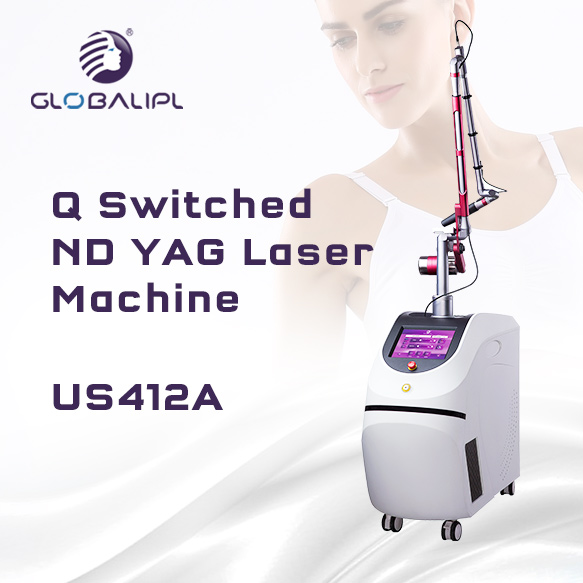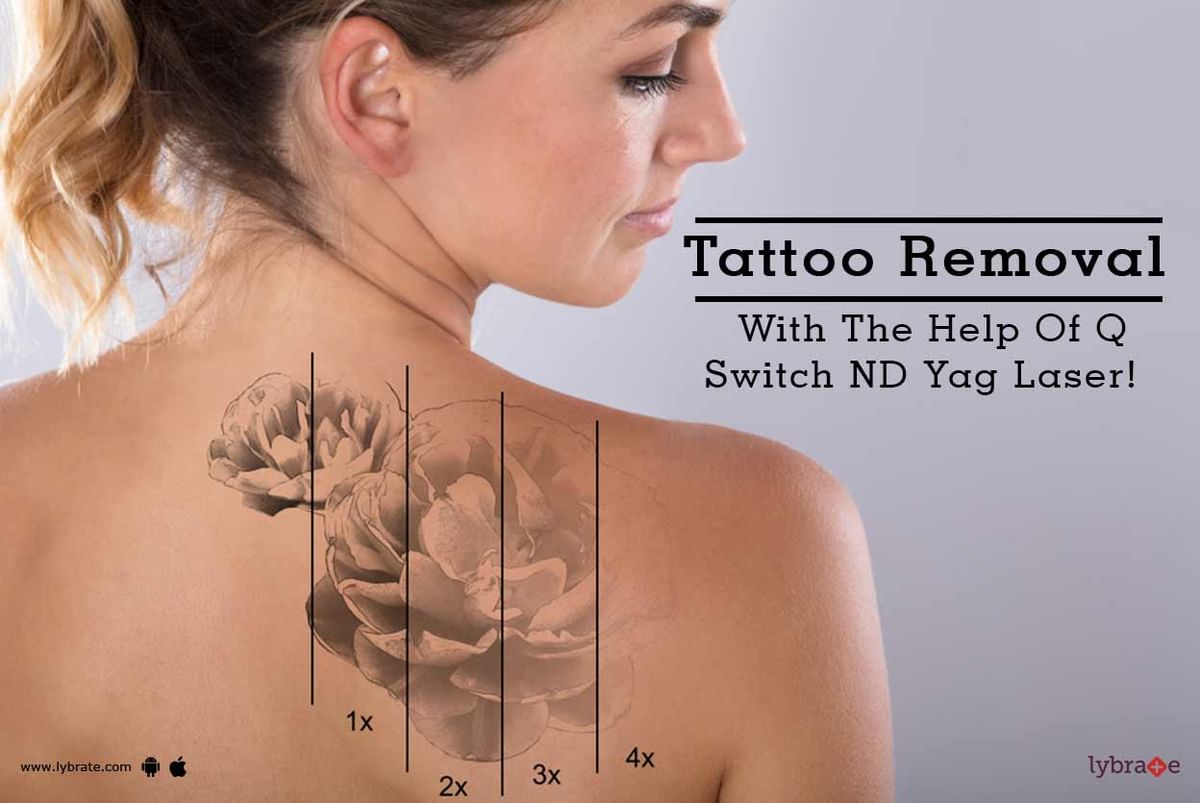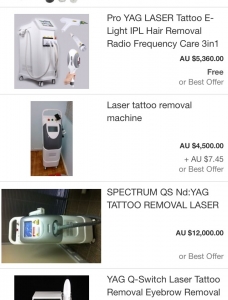Evade Ink: Achieve Flawless Skin with Laser Tattoo Removal

Introduction to Laser Tattoo Removal
Overview of laser tattoo removal
So, you've got a tattoo that you regret? Fear not, because laser tattoo removal is here to help. Laser tattoo removal involves using high-intensity light beams to break down the ink particles in your tattoo. The broken-down ink is then absorbed by the body's immune system and eliminated from the body. Depending on the size and complexity of your tattoo, multiple treatment sessions may be required to remove the ink completely.
Benefits of laser tattoo removal
One of the key benefits of laser tattoo removal is that it is a safe and effective method for removing unwanted tattoos. Compared to other methods, such as surgical excision or dermabrasion, laser removal is less painful, less invasive, and has fewer risks of scarring or infection. Laser tattoo removal is more precise, allowing only the targeted area to be treated without affecting the surrounding skin.
Another benefit is the flexibility that laser tattoo removal offers. Clients can remove their tattoos entirely or fade them for a cover-up tattoo. Laser removal also offers a wide range of colours that can be targeted, making it effective for removing even the most vibrant and intricate designs.
Laser tattoo removal is a great option for those who regret their tattoos. It offers a safe, effective, and versatile method for removing unwanted ink without causing significant pain or scarring.

Q-Switched Laser Tattoo Removal
Q-Switched Laser Tattoo Removal Procedure
If you're considering laser tattoo removal, Q-switched laser technology is one of today's most effective and popular methods. The Q-switched laser emits high-energy pulses that target the ink particles in your tattoo. The laser beams penetrate the skin, breaking down the tattoo pigment without causing damage to the surrounding tissues. This procedure is virtually painless and is commonly used to remove dark tattoos of all sizes.
During the procedure, your practitioner will use a handheld device that emits the laser beams onto your tattoo. The number of sessions required will depend on your tattoo's location, size, colour, and depth. Typically, smaller tattoos require fewer sessions, while larger or more complex tattoos may require several sessions.
Q-Switched Laser Tattoo Removal Aftercare
After the Q-switched laser tattoo removal procedure, following proper aftercare guidelines is essential to ensure a speedy and safe recovery. Your practitioner will provide you with specific instructions on how to care for your skin and minimize any potential risks, such as discolouration, scarring, or infection.
Some general aftercare tips include cleaning the treated area, using a non-scented soap, and applying a sterile bandage for a few days. You should avoid exposing the treated area to sunlight or UV rays for at least a week after the procedure to minimize the risk of sunburn or skin damage.
Q-switched laser tattoo removal is a safe and effective way to remove unwanted tattoos. Following proper aftercare guidelines and attending multiple treatment sessions, you can successfully remove your tattoo without any significant discomfort or damage to your skin. It's always best to consult a certified practitioner to determine if this procedure suits you.

IPL/CPL Tattoo Removal
IPL/CPL Tattoo Removal Procedure
If you're considering getting rid of your tattoo, IPL/CPL technology is another excellent option for tattoo removal. The Intense Pulsed Light (IPL) or Collimated Pulsed Light (CPL) emits high-energy waves that break up the tattoo ink particles into smaller fragments. The body's immune system can then remove these fragments gradually.
During the procedure, your practitioner will use a handheld device that emits light waves onto your tattoo. Depending on your tattoo's colour, size, location, and depth, the number of sessions required may vary. Darker and deeper tattoos may take longer to fade than lighter or more superficial ones.
IPL/CPL Tattoo Removal Aftercare
Just like with Q-switched laser tattoo removal, proper aftercare is essential after IPL/CPL tattoo removal to ensure a speedy and safe recovery. Your practitioner will provide you with specific instructions on how to care for your skin and minimize any potential risks, such as pigmentation changes, scarring, or infection.
Some general aftercare tips include avoiding sun exposure and wearing sunblock daily to minimize the risk of developing pigmentation problems. You should avoid exposing the treated area to sunlight or UV rays for at least two weeks after the procedure. If you experience discomfort or swelling, apply an ice pack to the treated area for 10-15 minutes every hour for the first 24 hours.
IPL/CPL tattoo removal is a safe and effective way to remove unwanted tattoos. Following proper aftercare guidelines and attending multiple treatment sessions, you can successfully remove your tattoo without any significant discomfort or damage to your skin. It's always best to consult a certified practitioner to determine if this procedure suits you.

Nd: YAG Laser Tattoo Removal
Nd: YAG Laser Tattoo Removal Procedure
If you’re considering removing your tattoo, Nd: YAG laser technology is an excellent option to explore. This type of laser tattoo removal targets the ink with light energy, which breaks down the pigment into smaller fragments that the body can naturally remove. The procedure involves moving the laser pen across the tattooed area, emitting the laser beam, and causing the skin to whiten. The sessions required may vary depending on tattoo size, colour, and location.
Nd: YAG Laser Tattoo Removal Aftercare
Proper aftercare is essential once you’ve completed your Nd: YAG laser tattoo removal sessions. Your practitioner will give you specific instructions on caring for your skin after each session to minimize potential risks such as infection or scarring.
Here are some general aftercare tips to keep in mind:
- Keep the tattooed area clean and dry.
- Avoid exposing the treated area to sunlight or UV rays.
- Apply an ice pack to the treated area for 10-15 minutes every hour for the first 24 hours to reduce swelling.
- Avoid strenuous exercise or activities that cause sweating for at least 24 hours.
- Do not soak or submerge the treated area in water (pools, hot tubs, baths) for at least two days.
Nd: YAG laser tattoo removal is an effective way to remove unwanted tattoos. You can successfully remove your tattoo with proper aftercare and multiple treatment sessions. It's important to consult a certified practitioner to determine if this procedure is right for you and to follow their aftercare guidelines carefully.

XlasePlus Laser Tattoo Removal
XlasePlus Laser Tattoo Removal Procedure
If you're thinking about removing a tattoo, you may want to consider XlasePlus laser technology. This treatment emits light energy absorbed by the ink and breaks it down into tiny fragments that the body can naturally remove. During the procedure, your practitioner will move the laser pen across the tattooed area to emit the laser beam, causing the skin to whiten. The number of sessions you'll need may vary based on your tattoo's size, colour, and location.
XlasePlus Laser Tattoo Removal Aftercare
After completing your XlasePlus laser tattoo removal sessions, providing your skin with proper aftercare is critical. Your practitioner will provide you specific instructions on how to care for your skin after each session to minimize potential risks like infection or scarring.
Here are some general aftercare tips to keep in mind:
- Make sure to keep the area clean and dry
- Avoid exposing the treated area to sunlight or UV rays
- Using an ice pack on the treated area for 10-15 minutes every hour for the first 24 hours can reduce swelling
- Avoid strenuous exercise or activities that cause sweating for at least 24 hours
- Do not soak or submerge the treated area in water (pools, hot tubs, baths) for at least two days.
Remember, XlasePlus laser tattoo removal is an effective way to remove an unwanted tattoo. It's crucial to work with a certified practitioner to find out if this treatment is ideal for you and to follow their recommended aftercare guidelines attentively.

Combination Laser Tattoo Removal
Combination Laser Tattoo Removal Procedure
If you're considering removing your tattoo, combining laser technology could be an option. This treatment utilizes two or more lasers of different wavelengths to penetrate and break down ink pigments. During the procedure, your practitioner will move the laser pen across the tattooed area to emit the laser beams, leading to skin whitening. The number of sessions required depends on the size, colour, and location of the tattoo and the patient's skin type.
Combination Laser Tattoo Removal Aftercare
After completing your combination laser tattoo removal sessions, your practitioner will provide specific instructions on caring for your skin. To ensure your skin stays healthy and to minimize potential risks like infection or scarring, here are some general aftercare tips:
- Keep the treated area clean and dry.
- Avoid exposing the area to sunlight or UV rays.
- Reduce swelling by applying an ice pack to the area for 10-15 minutes every hour for the first 24 hours.
- Avoid strenuous activity or activities that cause sweating for at least 24 hours.
- Do not soak or submerge the treated area in water (pools, hot tubs, baths) for at least two days.
Combining laser tattoo removal is an effective way to remove an unwanted tattoo. To ensure a successful outcome, working with a certified practitioner and following their recommended aftercare guidelines attentively is critical.

Factors that Affect Laser Tattoo Removal
Skin colour and type
Regarding laser tattoo removal, skin colour and type are vital in determining the outcome. Lasers target dark pigments in the tattoo ink, meaning that those with fair skin and dark tattoos experience better results. However, people with darker skin may require extra caution, as the laser can also target the darker pigments in their skin, potentially leading to discolouration.
Age and location of the tattoo
Older tattoos are easier to remove than newer ones, as the ink tends to fade. Additionally, the location of the tattoo can affect removal, with areas that receive more sunlight fading faster than those in shadier spots. Areas with more blood supply, such as the face and neck, can also result in quicker fading.
Ink colour and quality
The colour and quality of the tattoo ink can significantly impact the results of laser removal. Darker colours like black and blue respond well to laser treatment, whereas lighter colours like yellow and green can be more challenging to remove. Additionally, inks that contain low-quality metal particles can become resistant to laser treatment, requiring more sessions to remove.
While laser tattoo removal can be an effective solution for unwanted tattoos, it's important to consider the above factors before undergoing the procedure. Consulting with a certified practitioner to determine the best approach for your case and following their recommended aftercare plan can help ensure a successful outcome.
:max_bytes(150000):strip_icc()/GettyImages-466174642-5a6fc4eac5542e0036e615f8.jpg)
Other Methods of Tattoo Removal Aside from Laser
Excision
Excision could be an option if you're looking for a more immediate solution to your tattoo woes. This involves removing the tattooed skin area and stitching the surrounding skin together. While it can effectively remove the tattoo entirely, it can also leave a noticeable scar in its place.
Dermabrasion
Dermabrasion is a method of tattoo removal that involves using a small, high-speed rotary tool to "sand down" the top layers of skin, effectively removing the tattoo. This can be an effective solution for smaller tattoos, but larger ones may require multiple sessions, and the procedure can be quite painful.
Salabrasion
Salabrasion is a technique that involves rubbing salt into the tattooed area, using a special tool similar to a dermabrasion tool to remove the top layers of skin. This method can be effective at fading the tattoo but can also be painful and may result in scarring.
While these alternative methods may benefit, they also have unique risks and downsides. It's important to speak to a certified practitioner about your options and select the best approach for your case. Remember always to follow recommended aftercare plans and give your skin time to heal between sessions.

Comparison between Q-Switched Laser, IPL/CPL, Nd: YAG, and XlasePlus Laser
Laser tattoo removal is one of the most popular methods to eliminate unwanted tattoos. The following chart compares the different types of laser tattoo removal technologies available on the market.
| Type of Laser | Pros | Cons |
|---|---|---|
| Q-Switched Laser | Highly effective, minimal scarring and damage to surrounding skin | Can be painful, expensive, and typically requires multiple sessions |
| IPL/CPL | Slightly less painful than Q-Switched Laser, can treat a variety of skin conditions | Less effective for dark-colored tattoos, not ideal for deep pigments |
| Nd: YAG | Effective for dark-colored tattoos and darker skin tones | May cause more pain and discomfort compared to other laser types |
| XlasePlus Laser | Fast, efficient, and can treat a variety of skin conditions with minimal pain | Not as effective for tattoos with green, purple, or bright blue ink |
Frequently Asked Questions
Q: How painful is laser tattoo removal?
A: Laser tattoo removal is known to be slightly painful and discomforting, but it can be minimised with numbing cream applied to the area.
Q: Can all tattoos be removed with a laser?
A: While most tattoos can be removed successfully with laser technology, older tattoos that have faded and those with some ink colours such as green, yellow, and purple may be more difficult to remove.
Q: How long does it take to remove a tattoo with laser?
A: The number of sessions required for complete tattoo removal varies from person to person and depends on the size, age, and colours of the tattoo. It can take from six months to several years of treatment for a full removal.
Tattoo removal techniques have advanced over the years, offering individuals several alternatives to laser removal. It's crucial to consult with a medical practitioner to assess which approach is suitable for your tattoo's size, age, and colour type. Follow-through with proper aftercare is just as important as the selected method.
